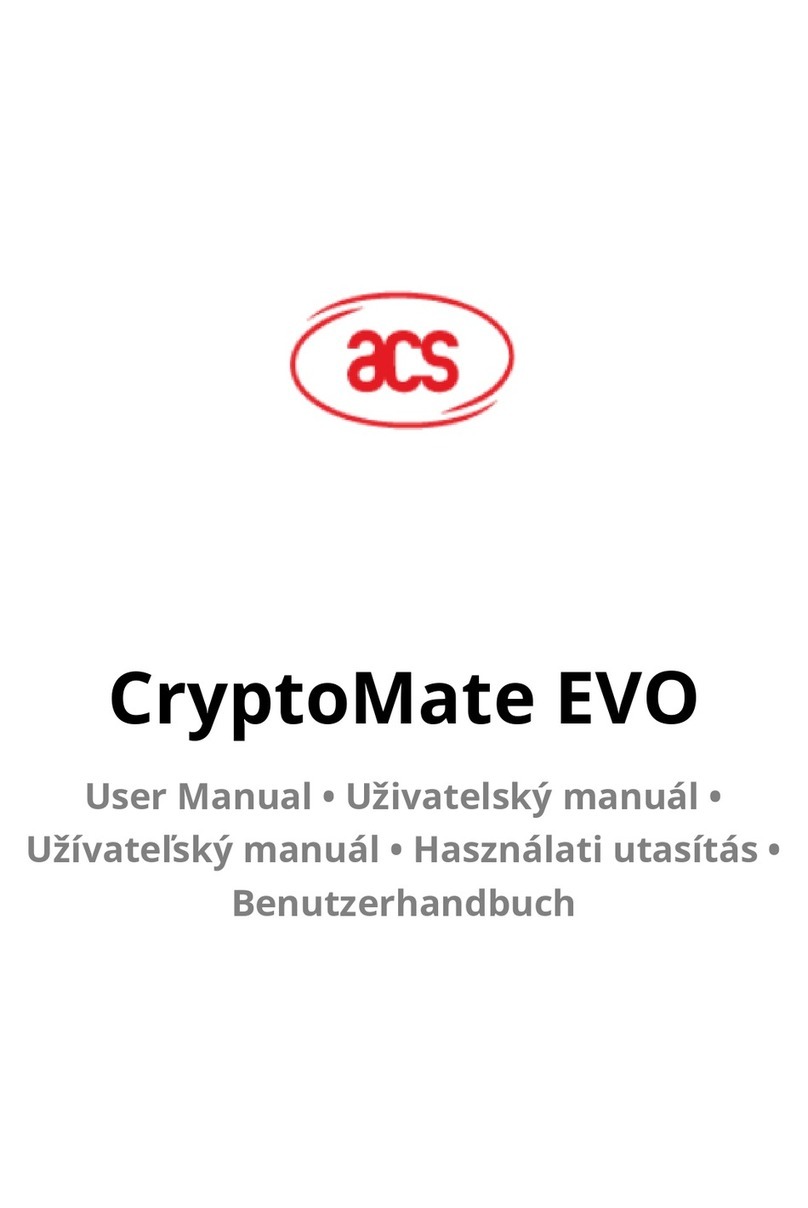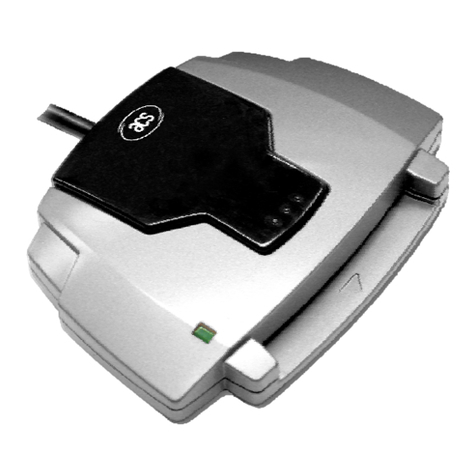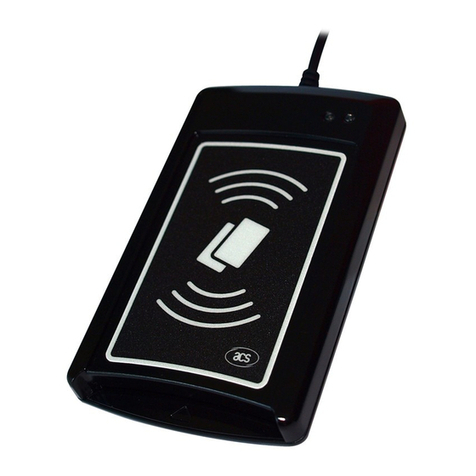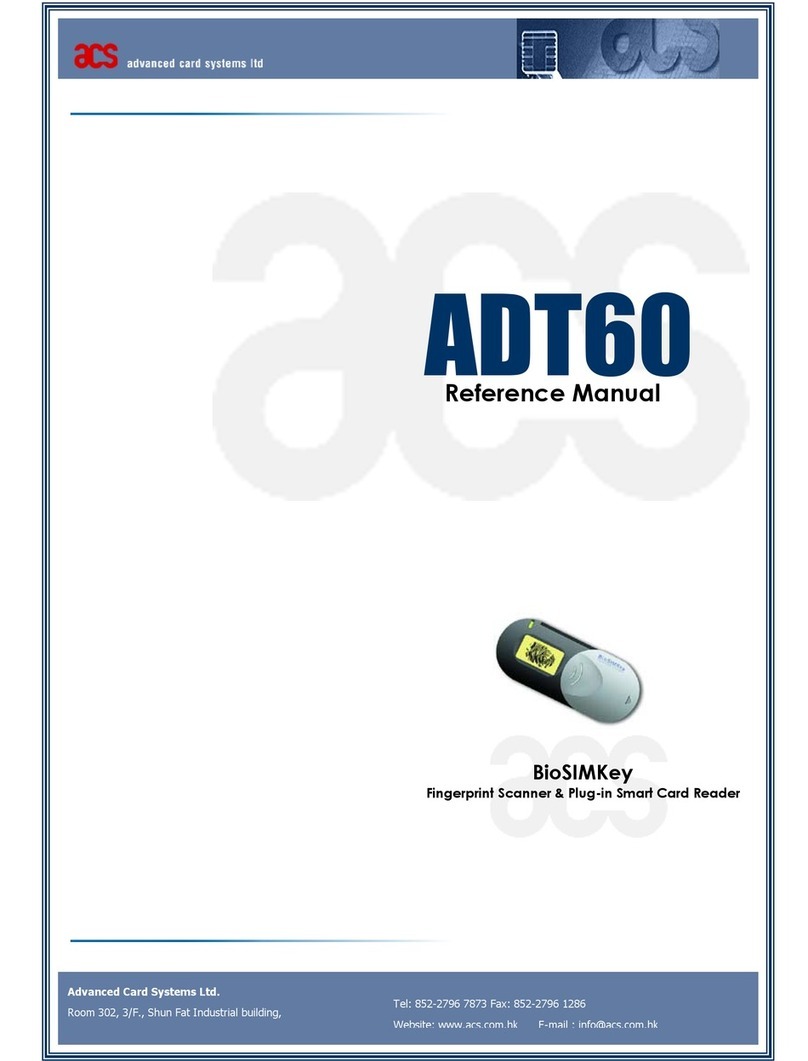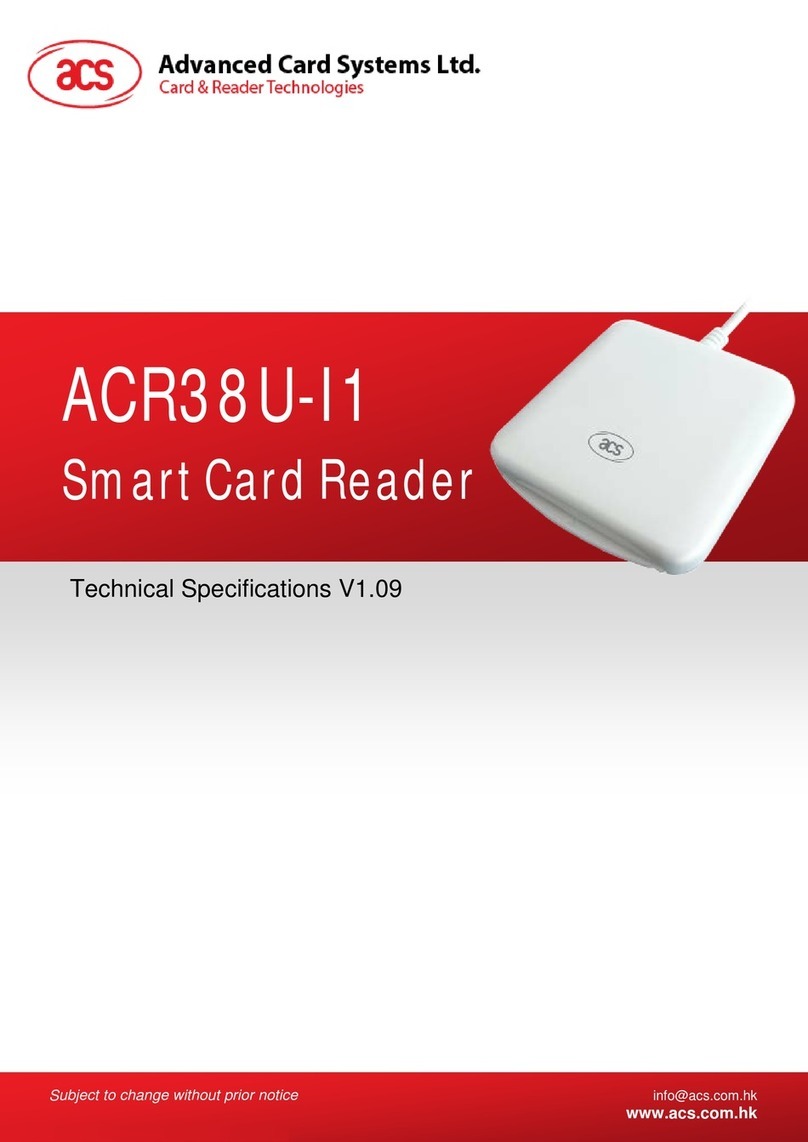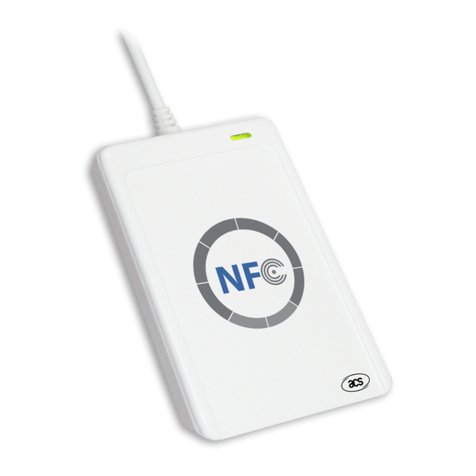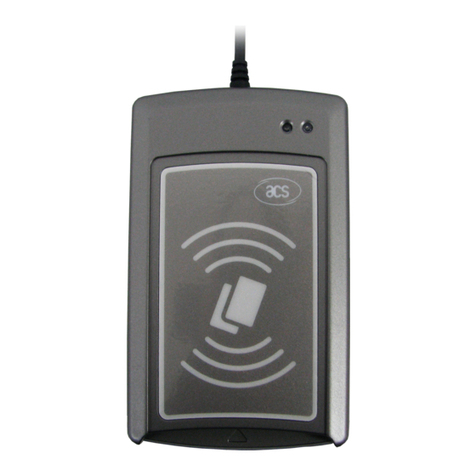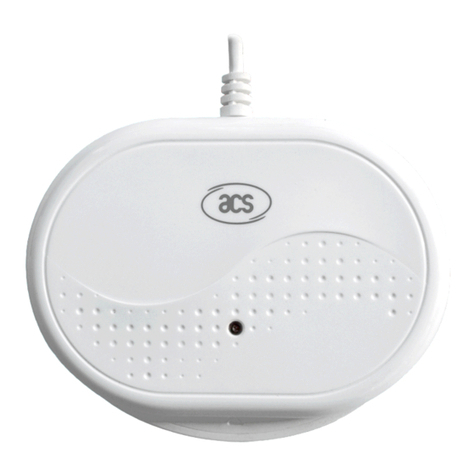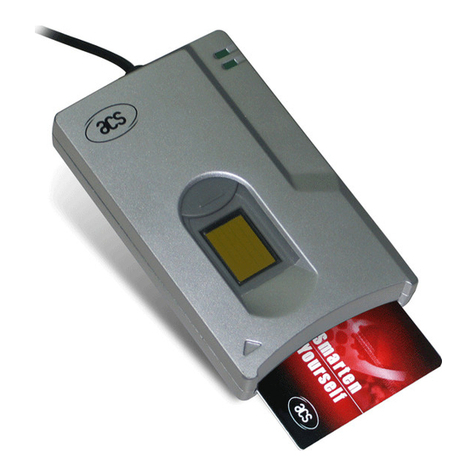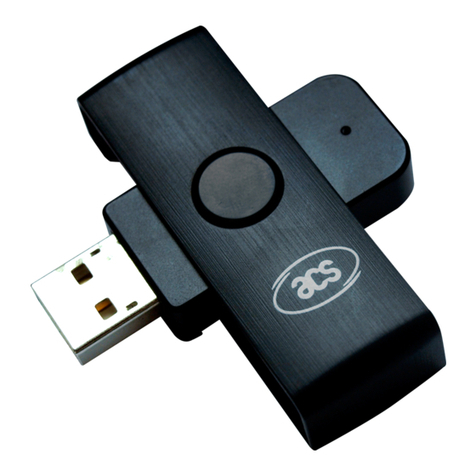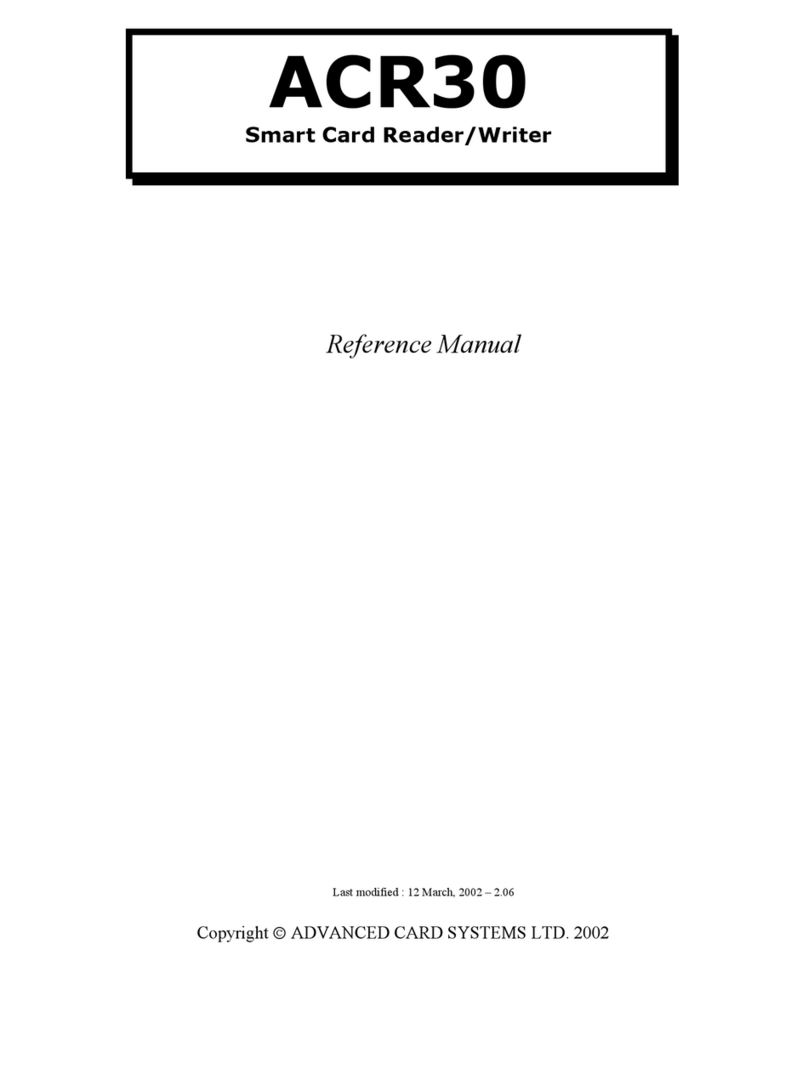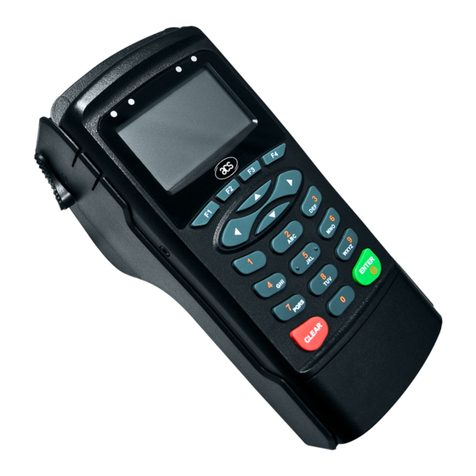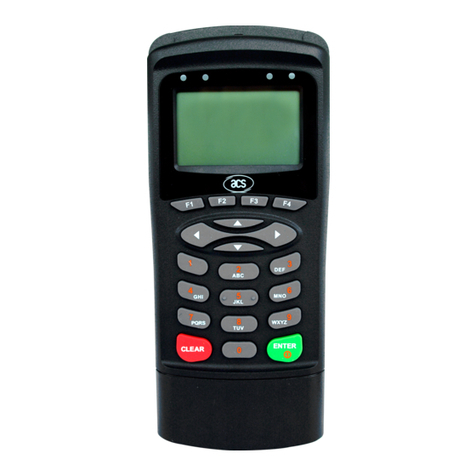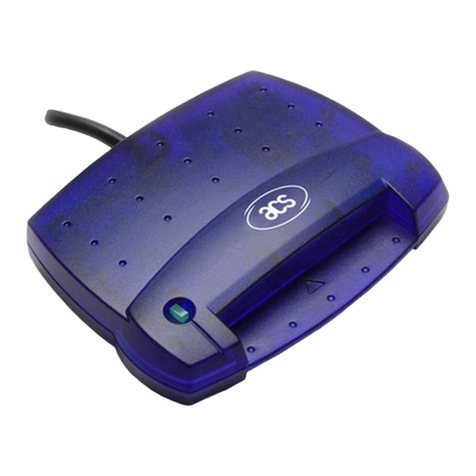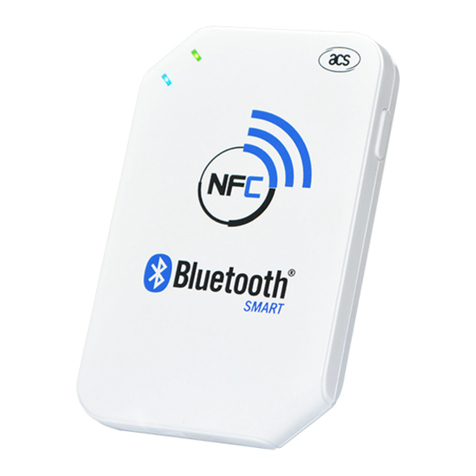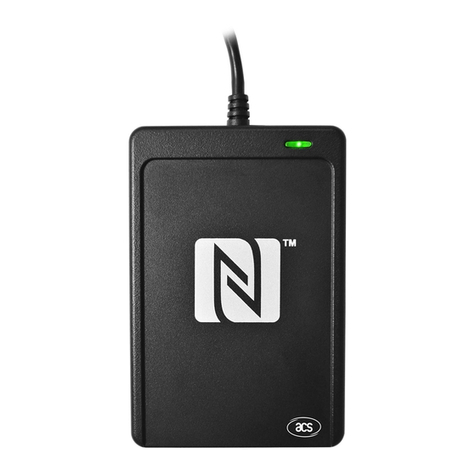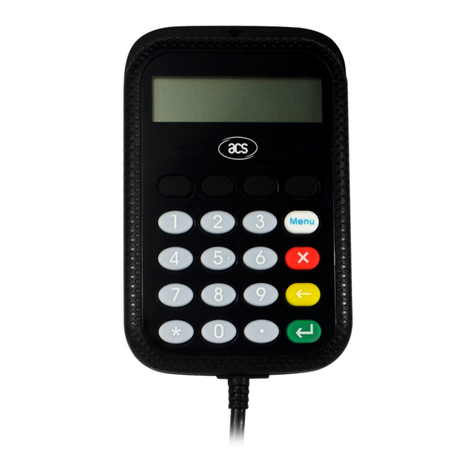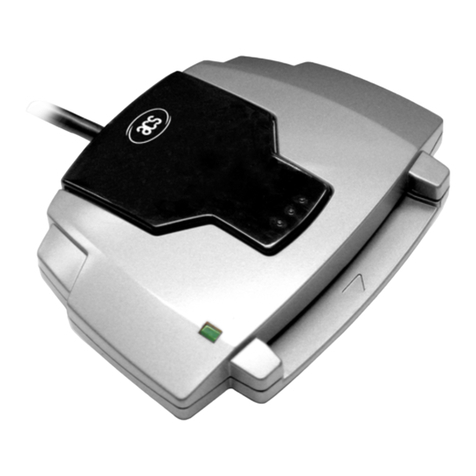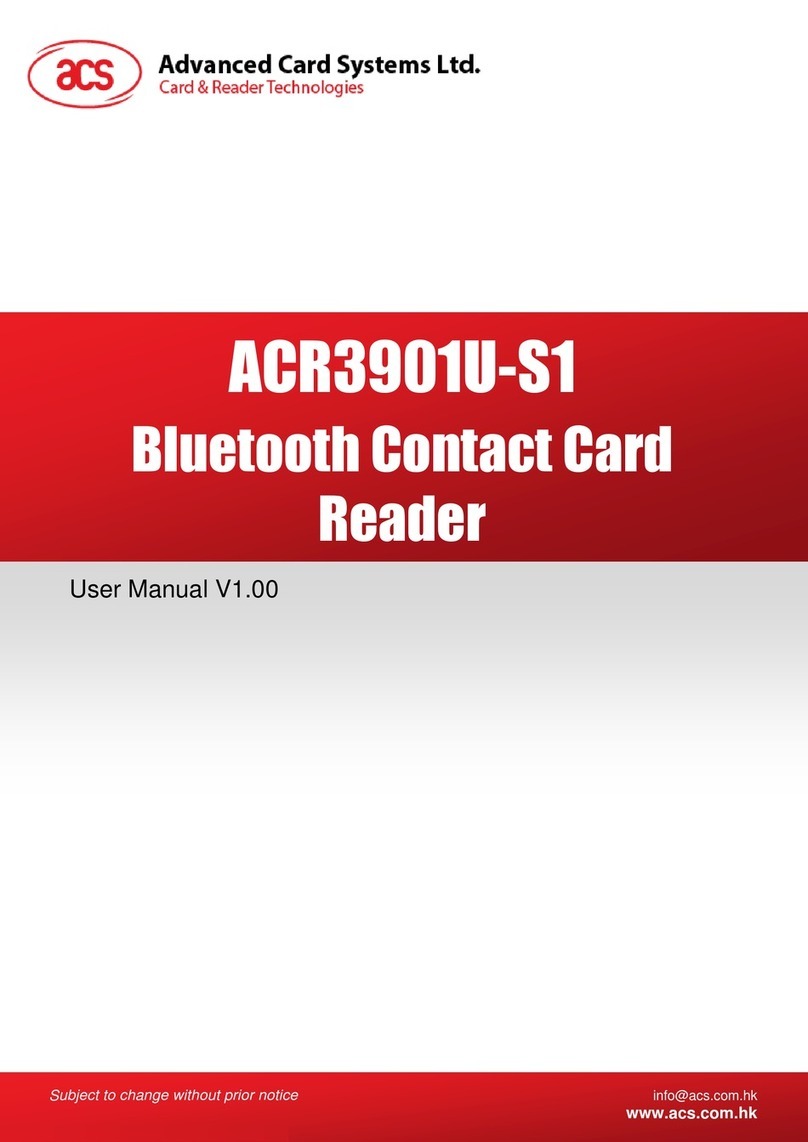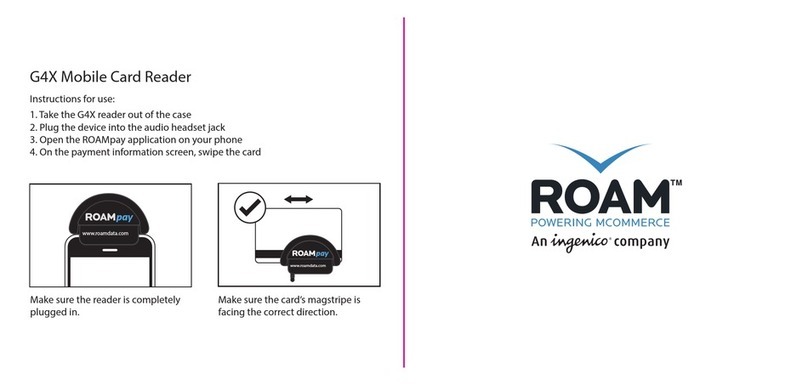
ACR30 Reference Manual
Version 3.3 January 2009 Page 3 of 44
ACR30
9.1.3.SELECT_CARD_TYPE ..............................................................................................21
9.1.4.RESET........................................................................................................................21
9.1.5.SET_NOTIFICATION..................................................................................................22
9.1.6.SET_OPTION .............................................................................................................22
9.2.Card Commands..................................................................................................................23
'104' - type non-reloadable Token Counter Cards (*).....................................................................23
9.2.1.1.RESET (*)...................................................................................................................23
9.2.1.2.POWER_OFF (*)........................................................................................................24
9.2.1.3.READ_DATA (*).........................................................................................................24
9.2.1.4.WRITE_DATA (*) .......................................................................................................24
9.2.1.5.PRESENT_TRANSPORT_CODE (*).........................................................................25
9.2.1.6.AUTHENTICATE_CARD_SLE4436 (firmware 2.10 onwards) (*)..............................26
9.2.1.7.AUTHENTICATE_CARD_SLE5536 (firmware 2.10 onwards) (*)..............................27
9.2.2.I2C-Bus cards (standard and extended addressing) (*).............................................28
9.2.2.1.RESET (*)...................................................................................................................28
9.2.2.2.POWER_OFF (*)........................................................................................................28
9.2.2.3.READ_DATA (*).........................................................................................................28
9.2.2.4.WRITE_DATA (*) .......................................................................................................29
9.2.3.Siemens SLE 4432/4442 intelligent 256 Byte Memory Card (*).................................29
9.2.3.1.RESET (*)...................................................................................................................29
9.2.3.2.POWER_OFF (*)........................................................................................................30
9.2.3.3.READ_DATA (*).........................................................................................................30
9.2.3.4.WRITE_DATA (*) .......................................................................................................31
9.2.3.5.WRITE_PROTECTION (*).........................................................................................31
9.2.3.6.PRESENT_CODE (only SLE 4442) (*).....................................................................32
9.2.3.7.CHANGE_CODE (only SLE 4442) (*).......................................................................33
9.2.4.Siemens SLE 4418/4428 intelligent 1K Byte Memory Card (*) ..................................33
9.2.4.1.RESET (*)...................................................................................................................33
9.2.4.2.POWER_OFF (*)........................................................................................................33
9.2.4.3.READ_DATA (*).........................................................................................................34
9.2.4.4.WRITE_DATA (*) .......................................................................................................35
9.2.4.5.WRITE_PROTECTION (*).........................................................................................35
9.2.4.6.PRESENT_CODE (only SLE 4428) (*).....................................................................36
9.2.5.MCU-based Card........................................................................................................36
9.2.5.1.RESET .......................................................................................................................36
9.2.5.2.POWER_OFF.............................................................................................................37
9.2.5.3.EXCHANGE_APDU...................................................................................................37
9.2.5.4.EXCHANGE_T1_FRAME..........................................................................................38
